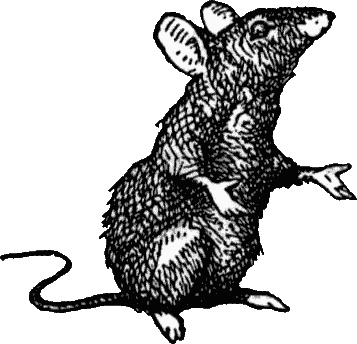A Fifteenth-Century Interest in Scandinavian Plague Rats July 15, 2010
Author: Beach Combing | in : Medieval , trackback
The Bubonic plague was around a long time before, in 1897, scientists finally discovered what caused the illness: disease-carrying fleas on the backs of rats.
Then having taken over five hundred years to work out the plague in scientific terms: these same genius scientists – after a visit to his doctor, Beachcombing is in an anti-scientific mood today – took a mere fifty years to weaponise said plague. Indeed, Beachcombing hopes to look at an early Japanese attempts at biological warfare in August.
But this traditional narrative is wrong in one respect. The first writer to connect the Bubonic Plague – guilty of perhaps two hundred million deaths in Euro-Asia – to fleas did not live in the nineteenth century. He was an obscure Swedish (or Danish) bishop, Bengt Knuttson, who in his A Litil Boke for the Pestilence (c. 1461-63, c. 1486 translated into English) put forward the novel theory that dirt, ‘fleys’ and vermin spread the disease.
Not bad. Not bad at all.
Now there was no proof offered for this contention and probably little merit should attach to Knuttson’s guess or instinct: ‘deduction’ seems too strong a word.
But then wasn’t it always likely that someone or other would stumble on the right reason sooner or later? After all, the Black Death tore Europe apart in the fourteenth through sixteenth centuries. There was a desperate attempt to understand why Christendom was suffering. God, who was very much alive and kicking at this date, was wheeled out with accompanying flagellants. Astrology was polished up and the conjunction of the planets were noted with much care. Earthquakes were blamed. Bad air and bad smells were examined. Climate change (really!) was seen as a possible cause. Minority explanations included intergenerational sex, overeating and, yes, ‘fleys’…
Naturally, if you have a thousand scholars guessing in this fashion then sooner or later someone was going to get close, as Knuttson, in fact, did.
In the same way in the thousand contemporary internet sites dedicated to cancer, somewhere an uneducated loon will have described what causes tumors to the satisfaction of twenty-third century doctors. Whether we should praise said ‘loon’ for this when his or her suspicions are eventually confirmed is another question.
Beachcombing wonders if readers know of any other examples of discoveries made before their times, but discoveries that were guesses rather than deductions. He remembers, for example, some ancient Greek attempts to explain the rise of man in terms that are remarkably close to modern theories of evolution. drbeachcombingATyahooDOTcom



